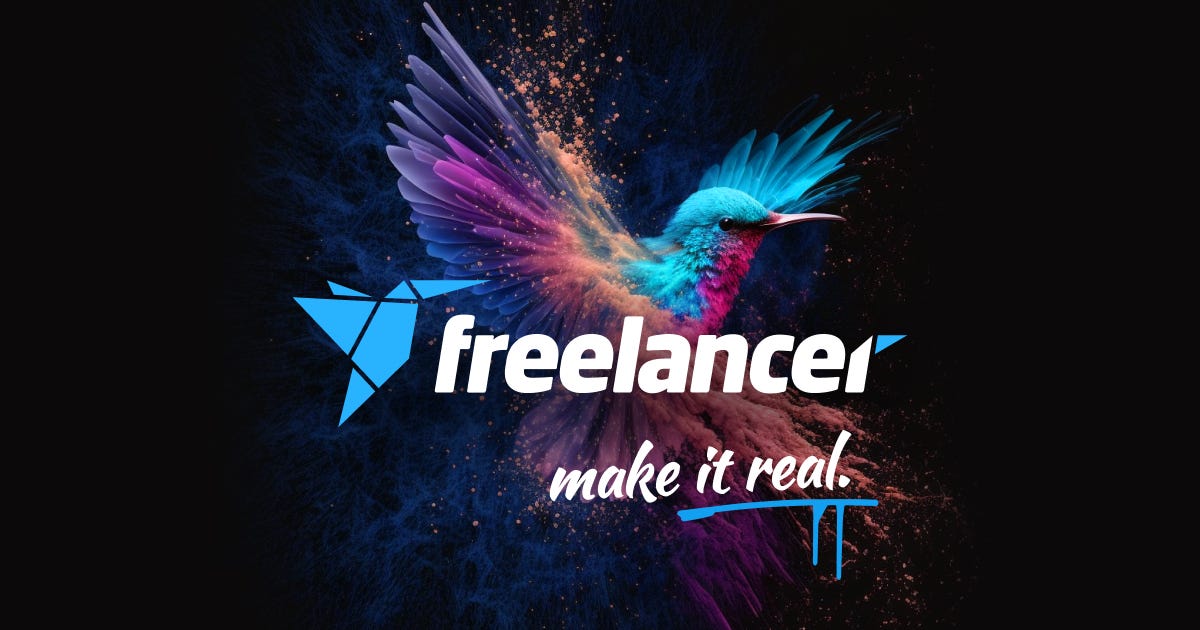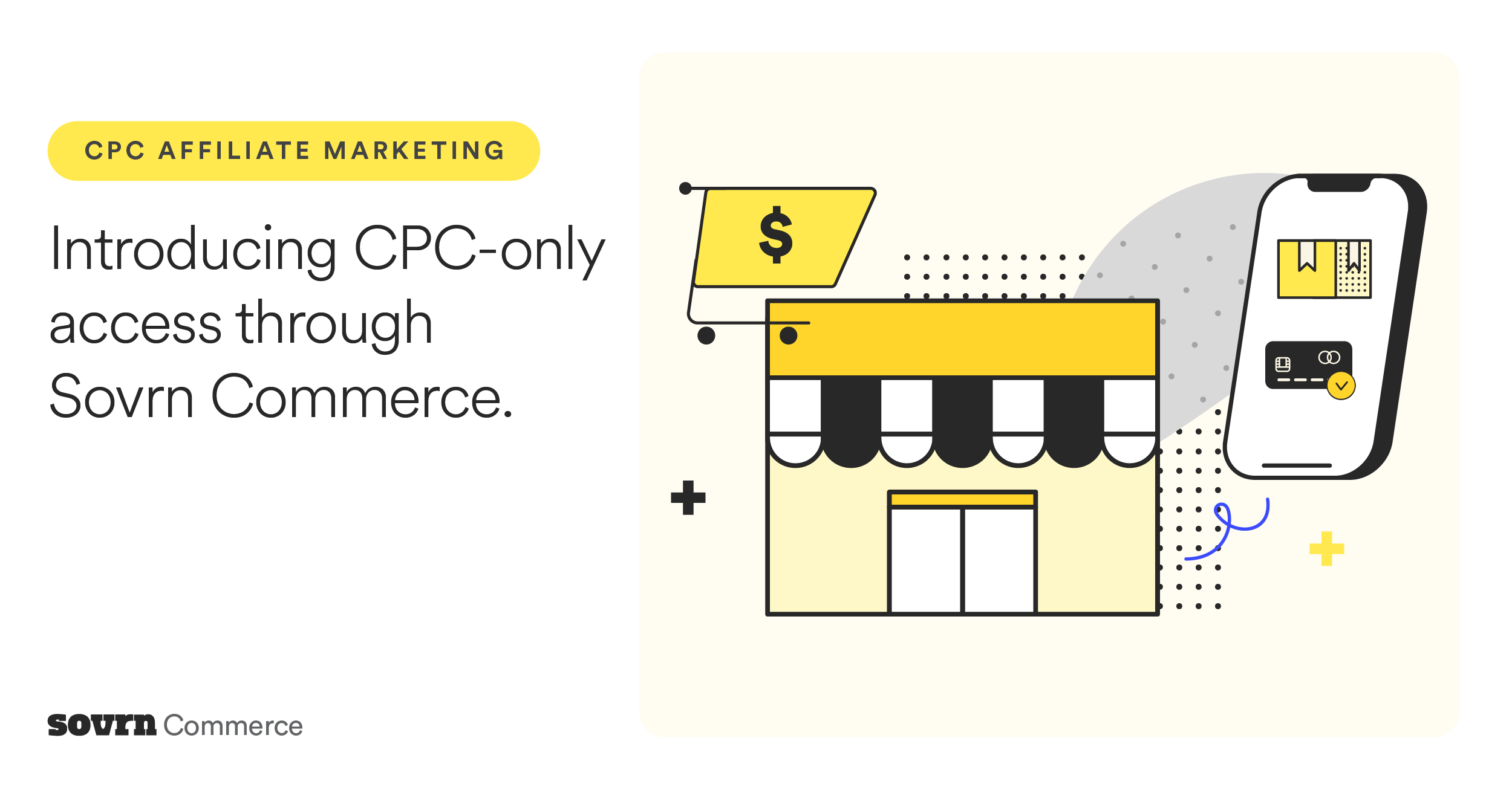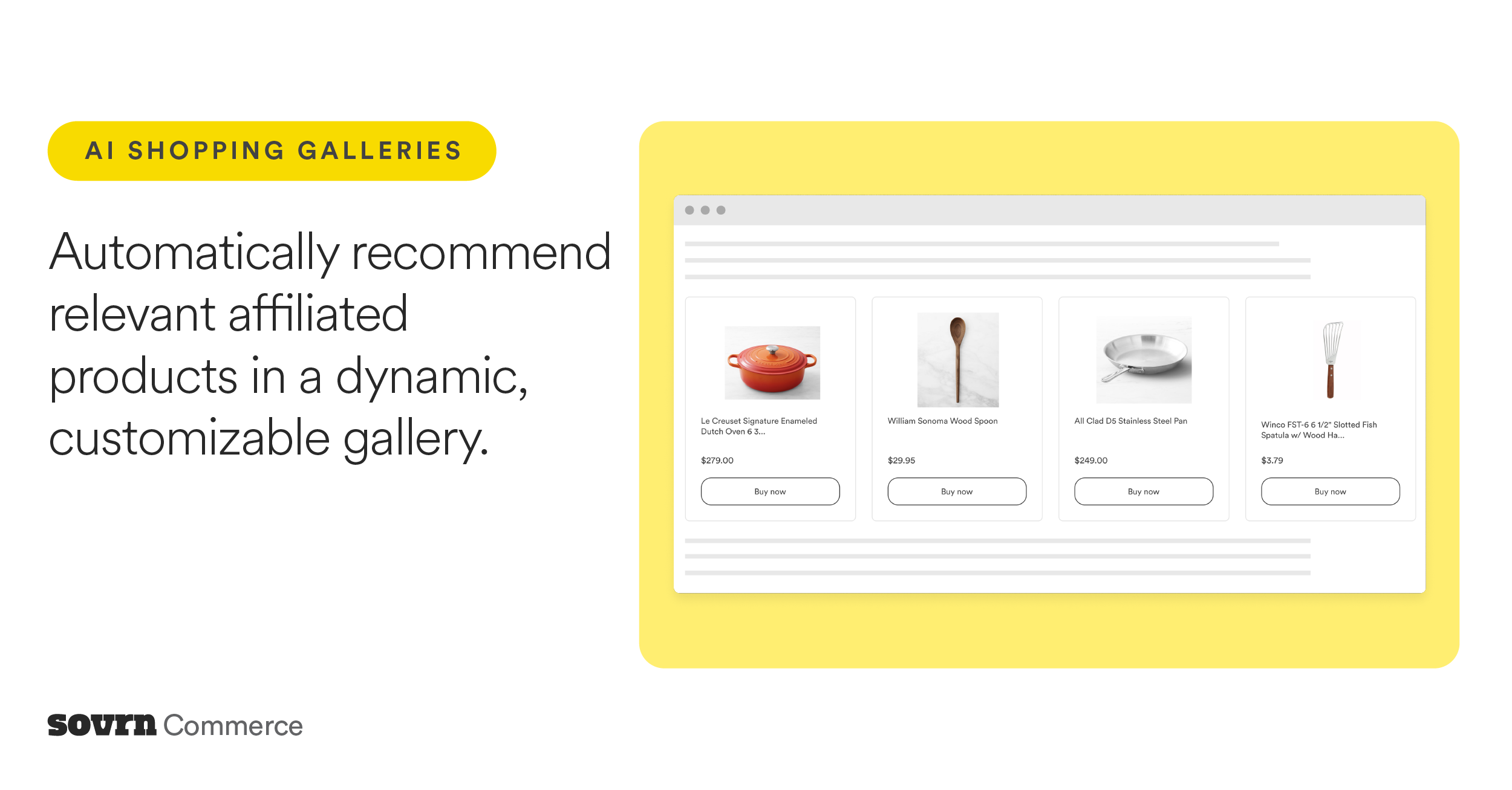Brand partnerships offer unique opportunities for businesses to expand their reach, enhance credibility, and drive innovation. When Getty Images recognized that Squarespace had great website-building tools but lacked high-quality imagery, they created a collaboration that benefited both companies and their customers.
“Squarespace is really great at what they do […] but they don’t really necessarily have access to a repository of imagery that is high quality as we do.” In that moment, Getty Images’ Peter Orlowsky recognized the unique potential of strategic brand partnerships to bridge this gap, fostering a collaboration that elevated user experiences and amplified business impact.
- By joining forces, Getty and Squarespace created mutual benefits: Squarespace users got easy access to professional photos
- Getty Images reached thousands of new customers
- Both companies increased their revenue through premium offerings
This is the power of brand partnerships—strategic collaborations where companies combine their strengths to achieve shared goals.
Instead of competing or going it alone, smart brands are partnering to:
- Reach new audiences faster
- Offer better products and services
- Reduce costs while increasing impact
In this guide, you’ll discover the different types of brand partnerships, their key benefits, and a simple 4-step process to build your own successful collaboration.
What are brand partnerships?
Brand partnerships are strategic collaborations between two or more complementary brands that work together to achieve shared goals. These partnerships aim to drive mutual growth by leveraging each brand’s strengths and resources.
By aligning with complementary partners, businesses can deliver more cohesive and valuable experiences for their audiences. This approach strengthens individual brand identities and fosters deeper connections in the marketplace.
From co-branding to product integration: Types of brand partnerships and how they drive growth
Brand partnerships take many forms, each offering unique opportunities for growth and innovation. Here’s a breakdown of the most common types, their benefits, challenges, and real-world examples.
Co-branding partnerships
Co-branding involves combining two brands’ identities, such as names, logos, or products, to create a unified offering that reflects both partners. These partnerships work best for limited-edition launches or promotional campaigns that emphasize a shared value or feature.
| Pros | Cons |
| – Boosts visibility – Creates shareable offerings – Reduces marketing costs |
– Risk of brand dilution – Potential customer confusion – Needs cohesive messaging |
What this looks like in action
CASETiFY, the lifestyle brand renowned for its innovative phone cases, partnered with BMW Lifestyle to create a cobranded smartphone case launched on Earth Day, April 22. This collaboration brilliantly merges sustainability with luxury design.
Image source: CASETiFY
Crafted using CASETiFY’s eco-friendly Re/CASETiFY material and upcycled BMW automotive aluminum, the case embodies the automaker’s essence. Its sleek and sophisticated design complements BMW’s aesthetics, making it as fitting on a desk as it is in a BMW car.
Content partnerships
This partnership focuses on co-creating or sharing content that connects with both brands’ audiences. These are ideal for building authority and connecting with overlapping audience segments.
| Pros | Cons |
| – Builds audience trust – Cost-effective campaigns – Strengthens expertise |
– Continuous collaboration needed – Tricky ROI tracking – High-quality content demands |
What this looks like in action
TripAdvisor introduced a new destination sponsorship opportunity designed specifically for tourism organizations aiming to boost visibility and traveler engagement. The feature lets tourism partners place rich, branded content, such as curated photo albums, display ads, and dynamic carousels on destination-specific search pages.
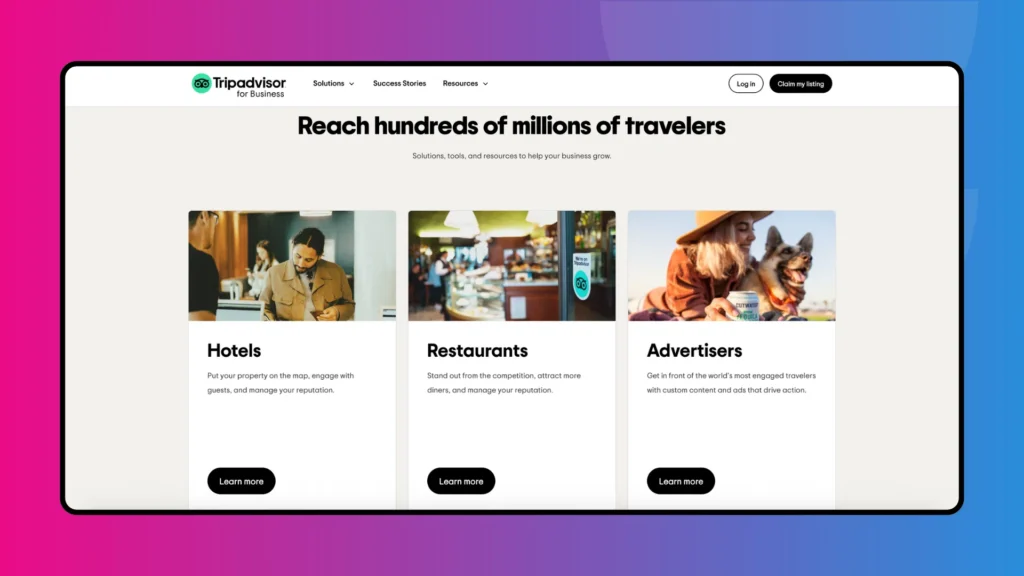
Image source: Tripadvisor for Business
In early testing, more than 300 destination marketing partners saw a 25 percent increase in traveler engagement. The aim is to help tourism boards and marketers reach travelers at the exact moment they’re most open to discovering new places to visit.
Distribution partnerships
Brands team up to use one partner’s network to distribute the other’s products or services. This is especially useful for entering new markets or audience segments.
| Pros | Cons |
| – Quick market expansion – Reaches established audiences – Cuts customer acquisition costs |
– Relies on partner’s network – Requires clear agreements – Potential dependency risks |
What this looks like in action
CardSnack collaborates with major retailers—such as Sephora and Target—to expand gifting options, and these retailers benefit by broadening their reach.
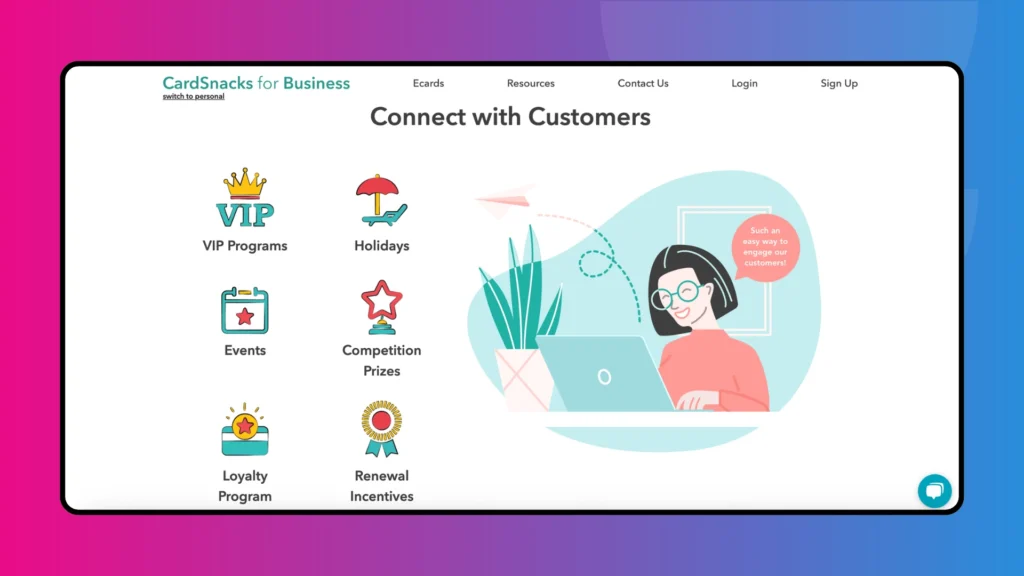
Image source: CardSnacks for Business
Customers can make gifting effortless by selecting items from over 400+ well-known brands. This collaboration offers diverse gift options and enables brands to customize digital cards with logos and branded envelopes.
Additionally, businesses can increase user engagement by linking promotional or product pages directly within the cards. This integration boosts visibility while driving customer interaction.
Product integration partnerships
These partnerships involve embedding one brand’s product or feature into the other’s to enhance user experience.
| Pros | Cons |
| – Enhances user experience – Shows innovation – Enables revenue share |
– High integration costs – Partner dependency risks – Complex technical requirements |
What this looks like in action
Canva and Getty Images have built a mutually beneficial partnership that strengthens both platforms. Canva leverages Getty Images’ high-quality images and videos to elevate its content library and responsibly train its generative AI tools, ensuring fair royalties for creatives.

Image source: Canva
Meanwhile, Getty Images is key in supporting Canva’s $200 million Content Fund, a pivotal initiative in fostering ethical and innovative AI development. This collaboration empowers creatives globally, providing users with diverse, premium content while investing in tools that drive responsible innovation.
Cause-related partnerships
Brands partner with nonprofits or charities on campaigns that advance social or environmental causes. This builds goodwill and strengthens emotional connections with customers.
| Pros | Cons |
| – Boosts brand reputation – Connects emotionally with communities – Strengthens community trust |
– Must appear genuine – Risks seeming opportunistic – Needs transparent execution |
What this looks like in action
Ivory Ella’s partnership with Save the Elephants demonstrates a powerful commitment to conservation and community. By donating 10 percent of profits to initiatives that protect elephant populations, Ivory Ella has contributed over $2 million to elephant conservation and other charitable causes. This collaboration also allows for innovations such as GPS collar technology, which has tracked over 400 elephants across Africa to better understand and protect their habitats.
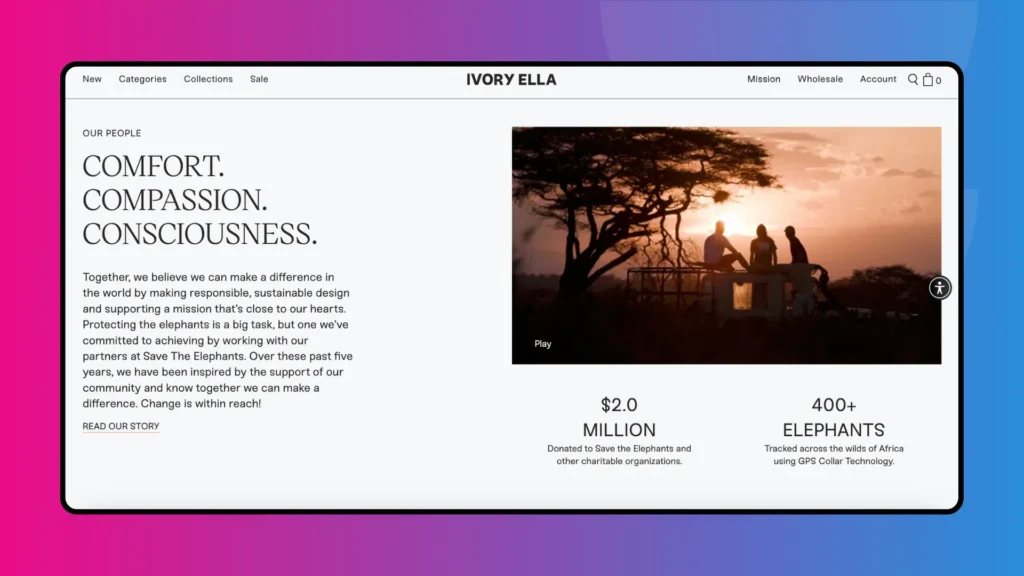
Image source: Ivory Ella
Beyond conservation, Ivory Ella inspires a global community to take action through sustainable design and meaningful purchases. Together, this partnership creates a lasting impact, fostering coexistence and ensuring a brighter future for elephants and the ecosystems they support.
Technology partnerships
Collaborations focus on co-developing or integrating emerging technologies to promote innovation and solve customer pain points.
| Pros | Cons |
| – Drives innovation – Shares R&D costs – Competitive edge |
– Protecting proprietary data – Integration challenges – Compatibility hurdles |
What this looks like in action
In 2024, PayPal expanded its long-standing collaboration with Global Payments to enhance the checkout experience for US merchants. As part of the partnership, Global Payments began offering Fastlane by PayPal, a guest checkout solution designed to speed up transactions and reduce cart abandonment.
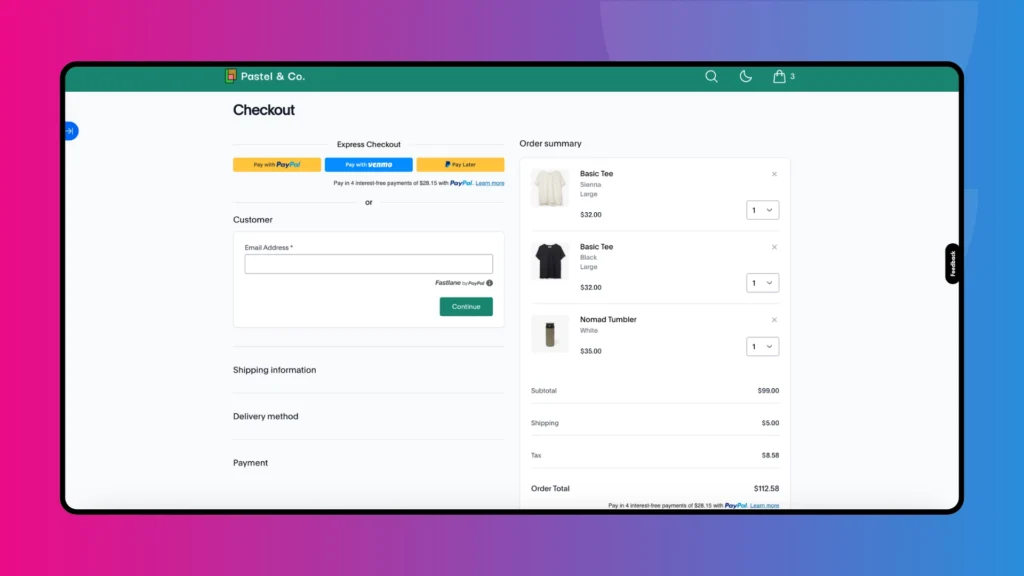
Image source: Fastlane by PayPal
Fastlane enables shoppers to complete purchases in as little as one click. The platform can deliver nearly 50 percent higher checkout conversion rates and reduce checkout time by over 28 percent compared to standard guest flows. The partnership directly brings PayPal’s innovation into more ecommerce ecosystems, helping merchants improve speed and satisfaction at checkout.
Each type of brand partnership offers distinct benefits depending on your goals, audience, and market strategy. These collaborations can amplify growth, innovation, and brand equity when executed thoughtfully.
6 advantages of teaming up with complementary brands
Brand partnerships are like a road trip with the perfect co-pilot. You share the journey, split the costs, and reach your destination faster while having a lot more fun along the way. Here are the perks of hitting the road with the right brand partner.
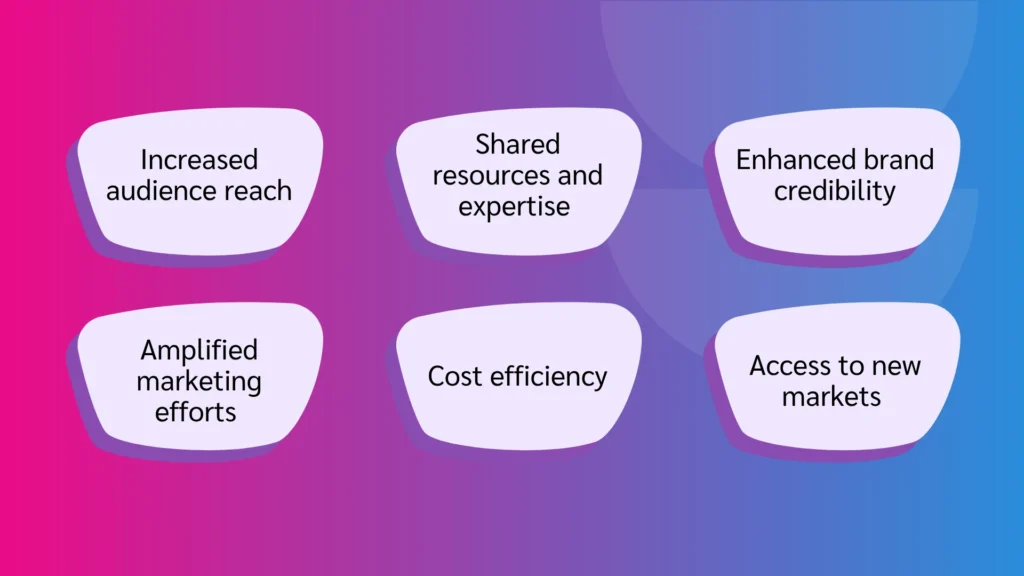
1. Increased audience reach
Brand partnerships are your shortcut to reaching bigger and more diverse audiences. By collaborating, each brand taps into the other’s audience base, expanding visibility and entering new customer segments. It’s comparable to unlocking doors to communities that might otherwise take months or even years to reach.
2. Shared resources and expertise
Two heads (or budgets!) are better than one. Brand partnerships let you pool resources, talent, and ideas to achieve more without overspending. Whether you’re improving content, launching new products, or running campaigns, combining expertise helps you get better results with less effort.
3. Enhanced brand credibility
Partnering with a trusted brand instantly boosts consumer confidence. A credible collaboration helps your brand appear more reliable and respected. The right partnership can quickly elevate how people see and trust your business.
4. Amplified marketing efforts
When brands join forces, their marketing goes further. Shared budgets and platforms make launching bigger, more impactful campaigns possible. Together, you can tell stronger stories that reach and resonate with a broader audience.
5. Cost efficiency
Sharing costs through partnerships is a smart move, especially when marketing budgets are tight. When your brand collaborates on events, product launches, or promotional campaigns, it can make a bigger splash without breaking the bank.
6. Access to new markets
Exploring new markets can be daunting. But with the right partner, your brand can confidently step into new regions, demographics, or industries. A well-aligned partner provides the market insight and local credibility necessary to navigate uncharted territory successfully.
4 simple strategies to nail your next brand partnership
Now that you know the perks of brand partnerships and see how they can deliver impressive results, it’s time to roll up your sleeves and make it happen. Building a successful brand partnership doesn’t have to be complicated.
With the right approach, you can create collaborations that drive growth, boost credibility, and wow your audience. Here are four simple, actionable steps to help you realize your partnership dreams.
1. Set clear goals and expectations
The success of brand partnerships hinges on defining clear goals and expectations upfront. Confirming these objectives creates alignment, accountability, and measurable results for both parties. Here’s why setting goals is critical:
- Establishes alignment: Guarantees both partners are working toward shared outcomes, avoiding misunderstandings or conflicts.
- Maintains focus: Keeps efforts on track by outlining priorities and preventing scope creep.
- Measures success: Provides clear metrics to evaluate partnership performance and impact.
- Builds accountability: Clarifies roles and responsibilities to avoid duplication of efforts or miscommunication.
- Facilitates decision-making: Helps partners make informed choices based on pre-defined objectives.
Set goals that reflect your shared objectives and the type of partnership. Depending on the nature of your collaboration, objectives can vary. For example, a joint collaboration might aim to penetrate a specific market sector by combining resources and expertise, while a content partnership may focus on driving metrics such as clicks, views, or shares.
While goals can be unique to each partnership, they often fall into three primary categories. Each of these categories can be tracked with specific KPIs to measure results effectively:
- Revenue growth: Referral sales, affiliate conversions, or co-branded product revenue.
- Audience engagement: Social media interactions, content performance, or email signups.
- Market expansion: Reaching new demographics, geographies, or customer segments.
2. Identify the right partner
Finding the right brand partner is all about compatibility. When researching brands, look beyond surface-level similarities into deeper considerations, including:
- Market positioning: Understand how the brand is perceived in the market to confirm their reputation aligns with yours.
- Customer base: Evaluate their audience demographics to verify alignment with your target market.
- Reputation: Research their track record for reliability and trust in their industry.
- Complementary strengths: Identify what unique value they bring to the table that enhances your offerings.
- Shared goals: Align objectives to create a partnership that benefits both sides equally.
- Growth potential: Consider whether the partnership has room to scale and evolve over time.
Best practice: Streamlining the recruitment process
Platforms such as impact.com streamline and automate your search with innovative discovery tools.
A Marketplace of 300k+ vetted and verified global partners guarantees you connect with trusted brands ready to collaborate.
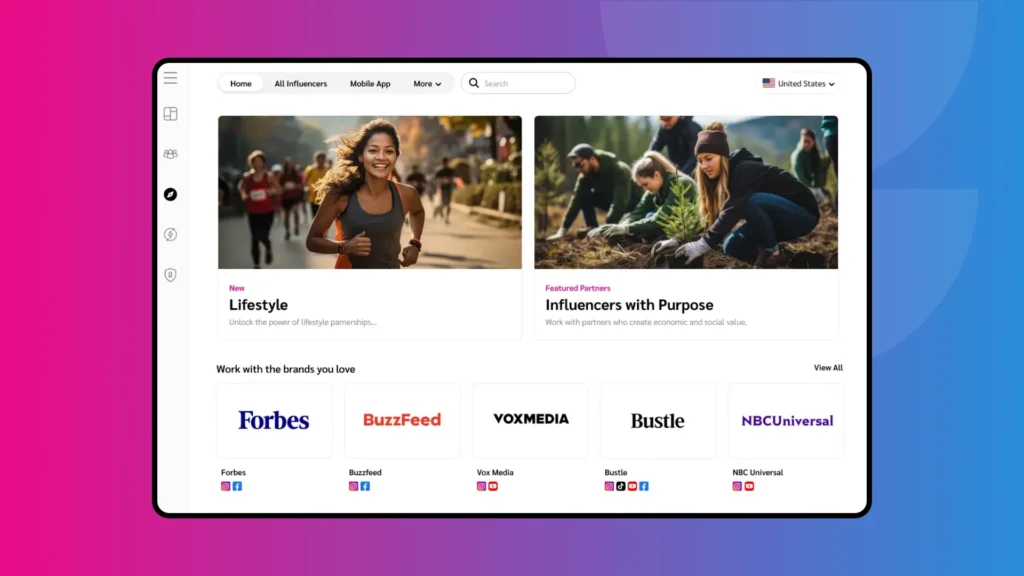
[Image description: The impact.com Marketplace offers perfectly curated partner collections]
Advanced search and AI-powered recommendations zero in on partners that align with your unique goals, audience, and values.
Detailed partner profiles give you insights into their audience performance metrics and market positioning to make informed decisions.

Each partner in the impact.com Marketplace has a detailed profile to help you make informed decisions
3. Develop a collaborative strategy
A collaborative strategy outlines how two or more brands work together to achieve shared goals. It defines the approach to co-creating campaigns, integrating strengths, and aligning on outreach.
A well-crafted collaborative plan values clear expectations, streamlines decision-making, and reduces potential friction. Developing an effective strategy requires meticulous planning and communication. Here are some factors brands must consider:
- Shared creative input: Collaborate on brainstorming sessions and content development to blend both brands’ voices seamlessly.
- Brand alignment: Align campaign messaging, tone, and visuals to both brands’ identity guidelines.
- Audience value: Focus on delivering meaningful content, products, or experiences that resonate with each brand’s target audience.
- Transparent communication: Establish regular check-ins, shared progress updates, and open feedback channels to keep everyone aligned and agile.
- Defined roles and responsibilities: Clarify each partner’s contribution and accountability upfront to prevent confusion and guarantee smooth execution.
- Collaborative tools: Use shared platforms for project tracking and updates to improve coordination and efficiency.
Best practices: Automating the partnership relationship
Implementing this strategy can be simplified with the help of automation tools from platforms such as impact.com. Automation reduces administrative burdens and creates seamless workflows for managing collaborative efforts. Key features to look for in a management solution include the following.
Automated partner engagement proactively sends updates, resources, and messaging to your collaborators, ensuring consistent communication and alignment across campaigns.

Streamline creative and offer management on impact.com
Centralized creative management stores and shares approved assets, offers, and curated catalogs securely in one location. This guarantees your partners have access to the latest materials.
Performance tracking and reporting help monitor campaign effectiveness, from audience reach to ROI. Real-time insights enable actionable adjustments.
Streamlined workflows automate routine tasks such as follow-ups, feedback loops, or approvals, giving both brands more time to focus on strategy and execution.
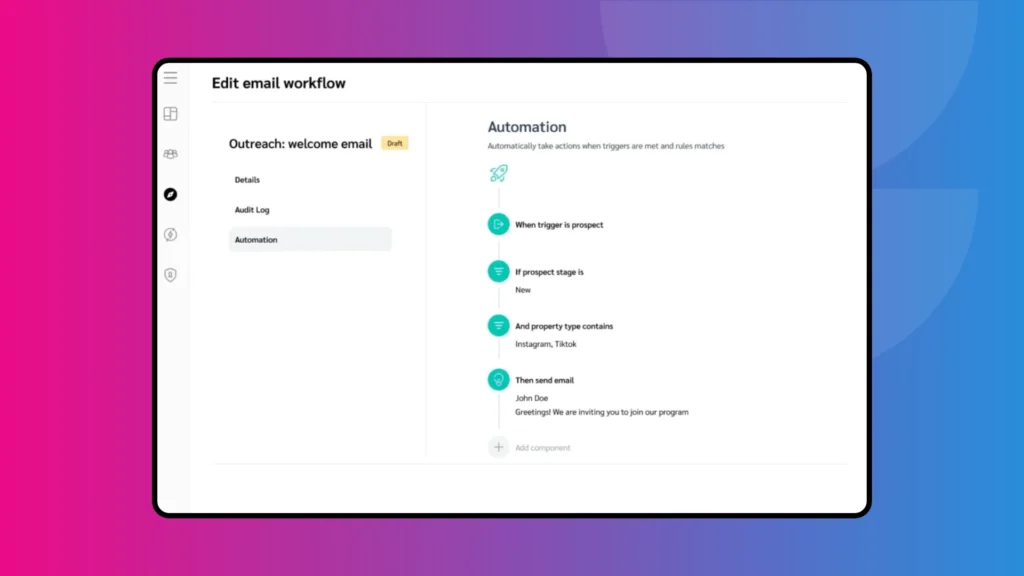
Email workflows automatically send emails, create tasks, change partner stage, and more when your partners perform certain actions
4. Monitor and evaluate performance
Even the best brand partnerships need regular tuning. Tracking performance isn’t only for proving success. It’s also how you stay aligned, adapt quickly, and make the most of your collaboration over time.
To optimize this process, focus on the following considerations:
- Alignment with objectives: Confirm that the partnership contributes to your defined goals, whether that’s increasing reach, revenue, or customer engagement.
- Performance consistency: Assess whether partner contributions remain stable or exhibit measurable growth.
- Engagement quality: Review the depth and relevance of customer interactions resulting from the partnership.
- ROI tracking: Evaluate if the partnership delivers consistent financial benefits that justify your investment.
- Scalability: Determine the potential for the partnership to grow and adapt as business needs evolve.
- Compliance adherence: Verify that all activities align with industry regulations and uphold brand standards.
Best practice: Practical ways to evaluate partnership performance
Ongoing evaluation is vital for keeping partnerships aligned and producing measurable value. Here are some practical methods to monitor and refine performance:
Schedule regular check-ins and reviews. Create structured opportunities to review progress, address challenges, and align on goals. Monthly meetings, performance surveys, or shared progress dashboards help both parties adapt strategies and maintain open communication.
Use innovative tracking tools. Use platforms such as impact.com with advanced tracking features, including cross-device monitoring, to track partner performance seamlessly. Universal tracking tags simplify compliance with global standards, offering comprehensive data for accurate performance measurement.
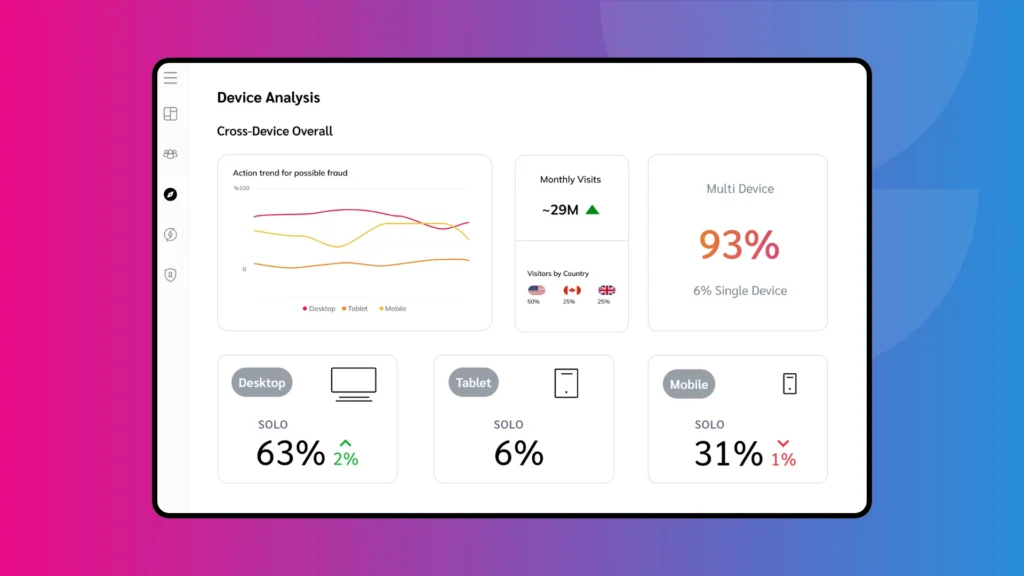
impact.com’s cross-device identity graph figures out which devices belong to the same user and links them.
Use detailed performance reporting. Detailed analytics provide a clear picture of partnership performance, from broad metrics to specific insights by contract, time frame, partner, or product. This granularity supports precise adjustments and better resource allocation.
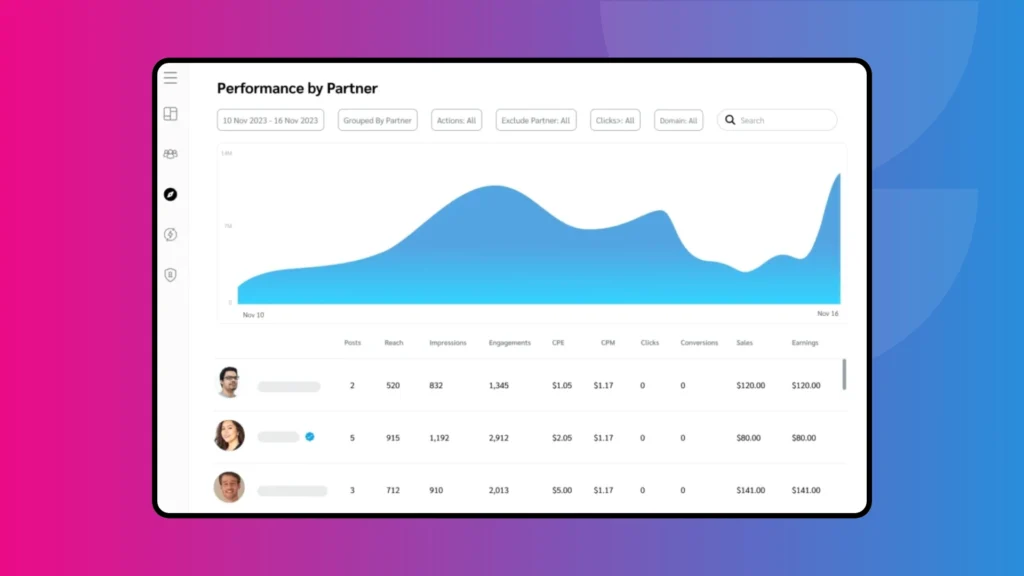
[Image description: Slice and dice your partners’ performance by criteria such as geolocation, SKU, promo code, and time of day.]
Review real-time trends. Monitor audience behavior and partner contributions regularly to identify shifts that may impact results. Staying informed with up-to-date data promotes smarter decision-making and enhances partnership outcomes.
FAQ
What is brand partnerships?
Brand partnerships are strategic collaborations between two or more complementary brands that work together to achieve shared goals. They help businesses leverage combined strengths, resources, and audiences to drive mutual growth, create innovative offerings, and deliver more cohesive and valuable experiences for their customers.
What are the benefits of brand partnerships?
Brand partnerships offer several key benefits, including:
- Increased audience reach: Access new and diverse customer segments by leveraging your partner’s audience.
- Shared resources and expertise: Pool resources and talent to achieve more cost-effectively.
- Enhanced brand credibility: Boost consumer confidence through association with trusted brands.
- Amplified marketing efforts: Launch bigger campaigns that resonate with a wider audience.
- Cost efficiency: Split marketing costs to make higher-impact initiatives more affordable.
- Access to new markets: Enter new regions, demographics, or industries with the help of a trusted partner.
What are the common types of brand partnerships?
Here are the most common types of brand partnerships with a brief description of each:
- Co-branding partnerships: Combine brand identities (names, logos, or products) for a unified offering, often used in limited-edition products or campaigns.
- Content partnerships: Collaborate on creating or sharing content to engage overlapping audiences and build authority.
- Distribution partnerships: These are ideal for market expansion because one partner uses the other’s network to distribute the other’s product or service.
- Product integration partnerships: Embed one brand’s product or feature into another’s to enhance the user experience.
- Cause-related partnerships: Collaborate with nonprofits or charities to advance social or environmental causes, fostering goodwill and emotional connections.
- Technology partnerships: Focus on co-developing or integrating emerging technologies to innovate and solve customer issues.
What are some examples of successful brand partnerships?
Here are a few examples showcasing the variety of successful brand partnerships:
- TripAdvisor and tourism organizations: Increased traveler engagement by 25 percent through branded content on search pages.
- PayPal and Global Payments introduced Fastlane, a guest checkout solution, which resulted in nearly 50 percent higher conversion rates.
- Canva and Getty Images: Getty Images enhanced Canva’s content library with premium images and videos, while supporting ethical generative AI tools.
- CASETiFY and BMW: Launched sustainable and stylish smartphone cases made from upcycled materials.
- Ivory Ella and Save the Elephants: Donated 10 percent of profits to elephant conservation initiatives, raising over $2 million.
Build power alliances with brand partnerships
Brand partnerships have the potential to open incredible growth by connecting you with new audiences, boosting your credibility, and driving innovation. They’re opportunities to achieve more together than you could alone.
Managing these partnerships doesn’t have to be complex. With tools such as impact.com, businesses can streamline every phase—from discovering the right partners to tracking performance in real-time. Advanced features, such as automation and data-driven insights, ensure you maintain precision and scalability.
Harnessing these capabilities allows you to build impactful, lasting alliances that drive meaningful business transformation. So, request a demo now and start developing impactful partnerships.
Related resources:




